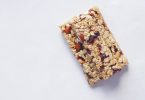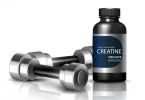You’ve been hitting the gym regularly, trying to slim down and tone your body. But despite your best efforts, you’ve noticed that your stomach seems to be getting bigger instead of smaller after working out. What gives? Could it be possible that exercise is actually making your stomach bigger?
In this article, we’ll explore the reasons why your stomach may appear bigger after working out, including the possible causes and solutions. We’ll dive into the science behind bloating and water retention, and provide tips on how to optimize your workouts and diet to achieve your fitness goals.
Whether you’re a seasoned gym-goer or just starting out, you’ll gain a deeper understanding of the factors that can impact your body composition and how to make the most of your fitness routine. So, if you’re ready to tackle the mystery of why your stomach may be bigger after working out, let’s dive in and get started!
Understanding Your Body’s Response to Exercise
When it comes to comprehending why your abdomen may seem larger after exercising, it’s critical to contemplate how your body reacts to physical activity. Two fundamental factors that have a substantial impact on this mechanism are muscle inflammation and water retention.
Muscle Inflammation
One reason your stomach might appear bigger after working out is due to muscle inflammation. When you engage in strenuous exercise, especially if you’ve just started a new fitness routine or increased the intensity, your muscles can experience micro-tears.
These tears are a natural part of the muscle-building process, and they initiate an inflammatory response in your body. As a result, your muscles retain extra fluid to aid in the repair and recovery process. This temporary water retention can lead to a feeling of bloating and make your stomach seem larger.
To mitigate muscle inflammation, it’s essential to ensure that you’re adequately hydrated before, during, and after your workout. Proper hydration can help your body flush out excess fluid, reducing the appearance of bloating.
Additionally, incorporating regular stretching and cool-down exercises into your routine can minimize muscle inflammation and discomfort.
Water Retention
Another culprit behind post-workout stomach bloating is water retention. Your body may retain water for various reasons, including hormonal fluctuations, high sodium intake, and dehydration.
After an intense workout, your body can sometimes react by retaining water as a defense mechanism, which can lead to bloating and a temporarily larger stomach.
To combat water retention, focus on maintaining a balanced diet with a reasonable sodium intake. Increasing your potassium intake from foods like bananas, spinach, and sweet potatoes can also help regulate your body’s water balance.
Staying well-hydrated is crucial in preventing your body from holding onto excess water, so make sure to drink plenty of fluids throughout the day.
Role of Diet in Stomach Size
Now that we’ve explored how your body responds to exercise, it’s time to dive into the significant role that your diet plays in determining your stomach size.
What you eat before and after your workouts can have a substantial impact on how your abdomen looks and feels. Let’s examine the effects of overeating and consuming unhealthy foods on your post-workout stomach.
Effect of Overeating
One of the most apparent reasons your stomach might seem larger after working out is overeating. It’s a common misconception that you can indulge in excessive calories because you’ve burned some during your exercise session.
While exercise does increase your calorie expenditure, it’s not a free pass to overindulge. If you consume more calories than you burn, your body will store the excess as fat, potentially leading to an expanded waistline.
To prevent post-workout stomach bloating caused by overeating, it’s essential to be mindful of portion control and calorie intake. Pay attention to your body’s hunger and fullness cues, and aim to eat a balanced meal that provides the nutrients your body needs without excess calories.
Remember that a healthy diet goes hand in hand with regular exercise for achieving and maintaining a trimmer waistline.
Impact of Unhealthy Foods
The caliber of the foods you ingest can also significantly affect your abdominal size and general well-being. Consuming a diet rich in processed foods, sugar, and unhealthy fats can result in inflammation in the body.
Inflammation can manifest as bloating and discomfort, making your stomach appear bigger. Highly processed foods can also disrupt the balance of gut bacteria, further contributing to digestive issues and an inflated abdomen.
To reduce post-workout stomach bloating caused by diet, opt for whole, unprocessed foods that are rich in fiber, lean proteins, and healthy fats.
These choices can promote digestive health and help maintain a flatter stomach. Avoid sugary drinks and limit your consumption of foods high in added sugars and trans fats, as these can contribute to inflammation and digestive problems.
Incorporating more fruits, vegetables, whole grains, and lean proteins into your diet can not only support your fitness goals but also improve your overall well-being. Remember that the goal is not just a smaller stomach but a healthier one as well.
Exercise Techniques and Stomach Size
As we continue our exploration of why your stomach might appear bigger after working out, it’s essential to examine the role of exercise techniques in shaping your abdominal area.
The types of exercises you choose and how you incorporate them into your fitness routine can have a significant impact on the size and appearance of your stomach.
Importance of Core Training
Core training plays a pivotal role in sculpting your midsection and can contribute to a flatter stomach. Neglecting core exercises can lead to weaker abdominal muscles, which may result in poor posture and a less toned appearance in the abdominal region.
While core exercises may not make your stomach smaller immediately, they can strengthen the muscles, improving overall posture and giving the appearance of a flatter stomach.
Incorporate exercises like planks, leg raises, and Russian twists into your routine to engage your core muscles. These exercises help to target the rectus abdominis, obliques, and transverse abdominis, providing stability and definition to your midsection. Over time, as your core strength improves, you may notice a more defined and toned midsection.
Role of Cardio Exercises
Cardiovascular workouts, such as running, cycling, and swimming, are superb for torching calories and eliminating surplus fat. Nonetheless, some people may mistakenly assume that only cardio exercises are indispensable for decreasing abdominal size.
While cardio is beneficial for overall weight loss, it’s essential to include a balanced fitness regimen that incorporates strength training and flexibility exercises.
Strength training not only helps build muscle but also boosts your metabolism, aiding in fat loss. Combining cardio with strength training can have a more significant impact on reducing body fat, including around the abdomen. Additionally, strength training can improve your overall body composition, giving you a leaner and more toned appearance.
Over-Exercising
Believe it or not, over-exercising can also contribute to a larger-looking stomach. Excessive exercise without proper rest and recovery can lead to chronic stress on the body, resulting in elevated levels of the stress hormone cortisol. High cortisol levels can lead to abdominal fat storage and muscle breakdown, causing your stomach to appear bigger.
It’s crucial to strike a balance between exercise and rest. Ensure you’re getting enough sleep and incorporating rest days into your fitness routine to allow your body to recover and prevent excessive stress on your system. Listen to your body and avoid pushing yourself to the point of exhaustion, as this can have counterproductive effects on your fitness goals and overall health.
Medical Conditions That Can Cause Stomach Swelling
Let’s delve into two common medical issues: Irritable Bowel Syndrome (IBS) and gastrointestinal problems.
Irritable Bowel Syndrome (IBS)
Irritable Bowel Syndrome (IBS) is a persistent gastrointestinal disorder that can cause abdominal distress, bloating, and alterations in bowel movements. For individuals with IBS, vigorous exercise can exacerbate symptoms, leading to a distended abdomen.
The exact cause of IBS is not fully understood, but it is thought to involve a combination of factors, including genetics, diet, and abnormalities in the gut-brain axis.
If you suspect you have IBS or are experiencing digestive issues, it’s essential to consult a healthcare professional. They can provide guidance on managing your condition and may recommend dietary changes or medications to alleviate symptoms. In some cases, stress management techniques and lifestyle modifications can also be beneficial for individuals with IBS.
Gastrointestinal Problems
Various gastrointestinal problems can contribute to stomach swelling and discomfort after exercise. These problems may include gas, indigestion, or food sensitivities. If you’ve consumed foods that your body doesn’t tolerate well, exercising can exacerbate these issues, leading to discomfort and bloating.
To address gastrointestinal problems, pay attention to your diet and identify any trigger foods that may be causing issues. Keeping a food diary can help you pinpoint problematic foods and make informed dietary choices.
Additionally, consider consulting a healthcare provider or registered dietitian for personalized guidance and to rule out any underlying digestive conditions.
Understanding that medical conditions can play a role in post-workout stomach swelling is crucial. If you suspect that a medical condition is contributing to your symptoms, seek professional medical advice to address the underlying issue and develop an appropriate management plan.
Conclusion
In this article, we’ve explored the various factors that can make your stomach appear bigger after working out. We’ve discussed how your body responds to exercise, the role of diet in shaping your abdomen, the importance of exercise techniques, and the potential impact of medical conditions on stomach swelling.
It’s essential to approach your fitness journey with a holistic perspective, considering both exercise and dietary choices while being mindful of your body’s unique needs and potential medical conditions.
By maintaining a balanced diet, incorporating core and strength training, and avoiding over-exercising, you can work towards achieving a flatter and healthier stomach.
Remember that achieving your fitness goals is a gradual process, and consistency is key. If you suspect underlying medical issues are contributing to your stomach concerns, consult with a healthcare professional for a thorough evaluation and personalized guidance.







